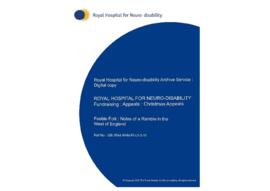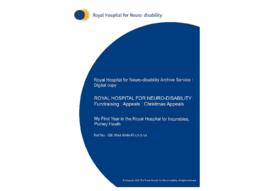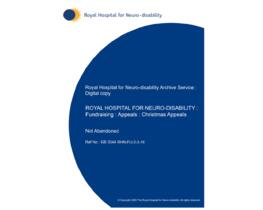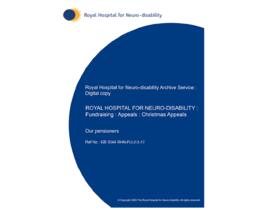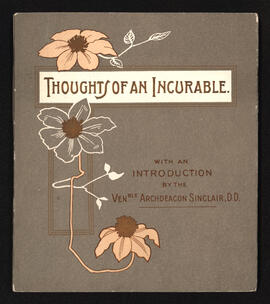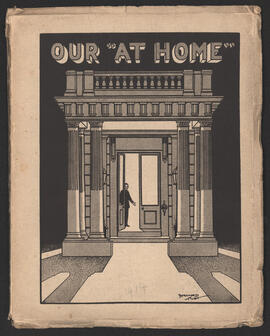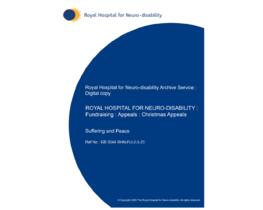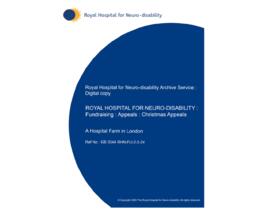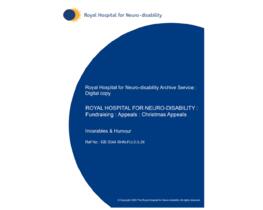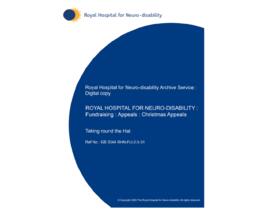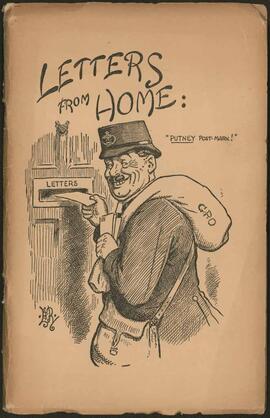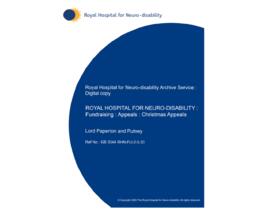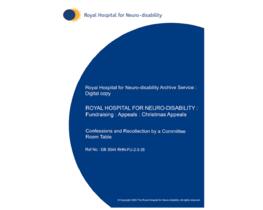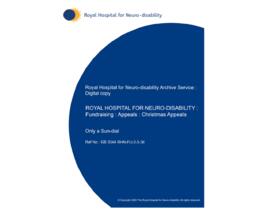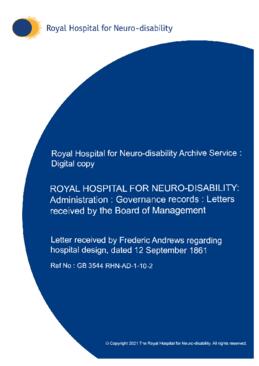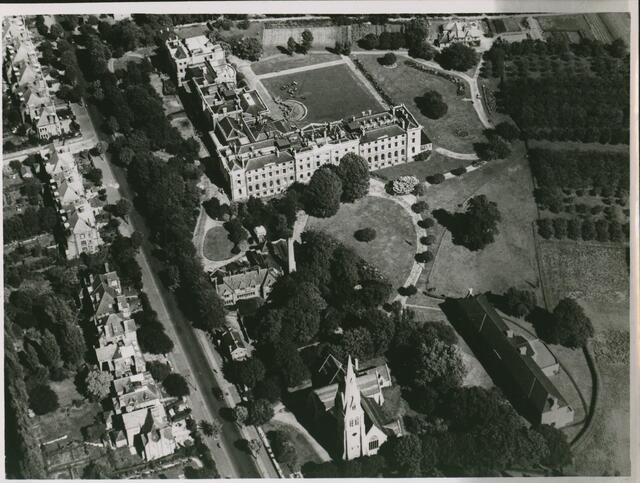Identity area
Reference code
Title
Date(s)
- 1854 - present (Creation)
Level of description
Collection
Extent and medium
c. 300 boxes
Context area
Name of creator
Archival history
The Hospital was established in 1854 as the 'Royal Hospital' at Mansion House on 31 July 1854. The driving force behind the charity was the Reverend Andrew Reed (1792-1862), a Non-Conformist clergyman and philanthropist who established five charitable institutions in his lifetime including the Royal Orphan Asylum, Asylum for Idiots (later Royal Earlswood Hospital) and the Royal Hospital, later known as 'Royal Hospital for Incurables'. The aim of the hospital was to provide a permanent home for people living with disability where there was no known medical cure and no other family or parish support was available.
The Hospital was initially established in an old workhouse in Carshalton, Surrey from 1855-1857, but soon a new premises was required as patient demand grew. From 1857-1862, the Hospital was established in Putney House, situated on Upper Richmond Road, Putney before moving to its current location, Melrose Lodge (formerly West Hill Mansion) in 1862. Once moved the Hospital quickly began to convert the Georgian mansion for use as a convalescent home, which more accurately reflected the function of the institution. Work was quickly undertaken to build two new wings to the north and south of the Georgian mansion house, before a new wing was built from 1879-1882, which allowed the accommodation of 100 more patients and included an assembly room for religious services and performances.
The Hospital offices were based in the City of London until prior to the advent of the Second World War when they were transferred to the hospital. There is reference to there being a loss of some of the early documents in a fire but the main administrative documents of the early hospital survive. Other items were held for safekeeping at the hospital's solicitors, Farrer & Co, which were transferred back to the hospital in a safe deposit box.
Immediate source of acquisition or transfer
The Hospital began to actively collect and bring together historical papers and artefacts in 2013. The majority of the collections came internally from cupboards and stores in the hospital with a few items donated from ex staff members. In 2018, with the appointment of a full-time archivist the collection has grown to include accessions from various departments and external donors, along with a growing collection of born-digital records and digitised records.
Prior to this some of the historic records were clearly retained based on the sources referenced from histories published by the hospital in 1936 and 1967. The former, The Royal Hospital and Home for Incurables, Putney, and its Founder. A short history of the parent institution for incurables until its completion in 1918, with a biography of its founder, Andrew Reed, D.D. by Philip French, makes reference to a loss of a number of early records relating to the hospital in a fire in the City Office in the early 20th century.
Content and structure area
Scope and content
The collection spans from its inception in 1854 to the present day and includes records relating to governance, administration, estate, financial, fundraising, medical and research. There is a wide variety of types of records include committee minutes, correspondence, admission case books, domestic ledgers, reports, fundraising pamphlets and audio-visual material and photographs.
Accruals
Further accruals are expected.
System of arrangement
The records have been arranged into 9 sub-series:
Administrative records: governance records, admission records, domestic stock and estate records, religious services and visitor's books.
Fundraising records: papers relating to the Fundraising Department, printed appeals
Financial records: financial committee minutes and bequests
Clinical records: Matron reports, Medical Officer reports, patient case notes, registers for nurse training school
Research records: research and conference reports
Publications and talks
Photographs
Artefacts and artwork
Audio-visual material
Conditions of access and use area
Conditions governing access
Records are open to the public, subject to the overriding provisions of relevant legislation, including data protection laws.
Conditions governing reproduction
A reprographics service is available to researchers subject to the access restrictions outlined above. Copying will not be undertaken if there is any risk of damage to the document. Copies are supplied in accordance with the Royal Hospital for Neuro-disability Archives' terms and conditions for the supply of copies, and under provisions of any relevant copyright legislation. Permission to reproduce images of documents in the custody of the Royal Hospital for Neuro-disability must be sought.
Language of material
- English
Script of material
Allied materials area
Notes area
Alternative identifier(s)
Access points
Subject access points
Place access points
Name access points
Genre access points
Description control area
Description identifier
Institution identifier
Rules and/or conventions used
ISDIAH – International Standard for Describing Institutions with Archival Holdings, 1st ed., International Council on Archives, 2008.
Status
Final
Level of detail
Partial



